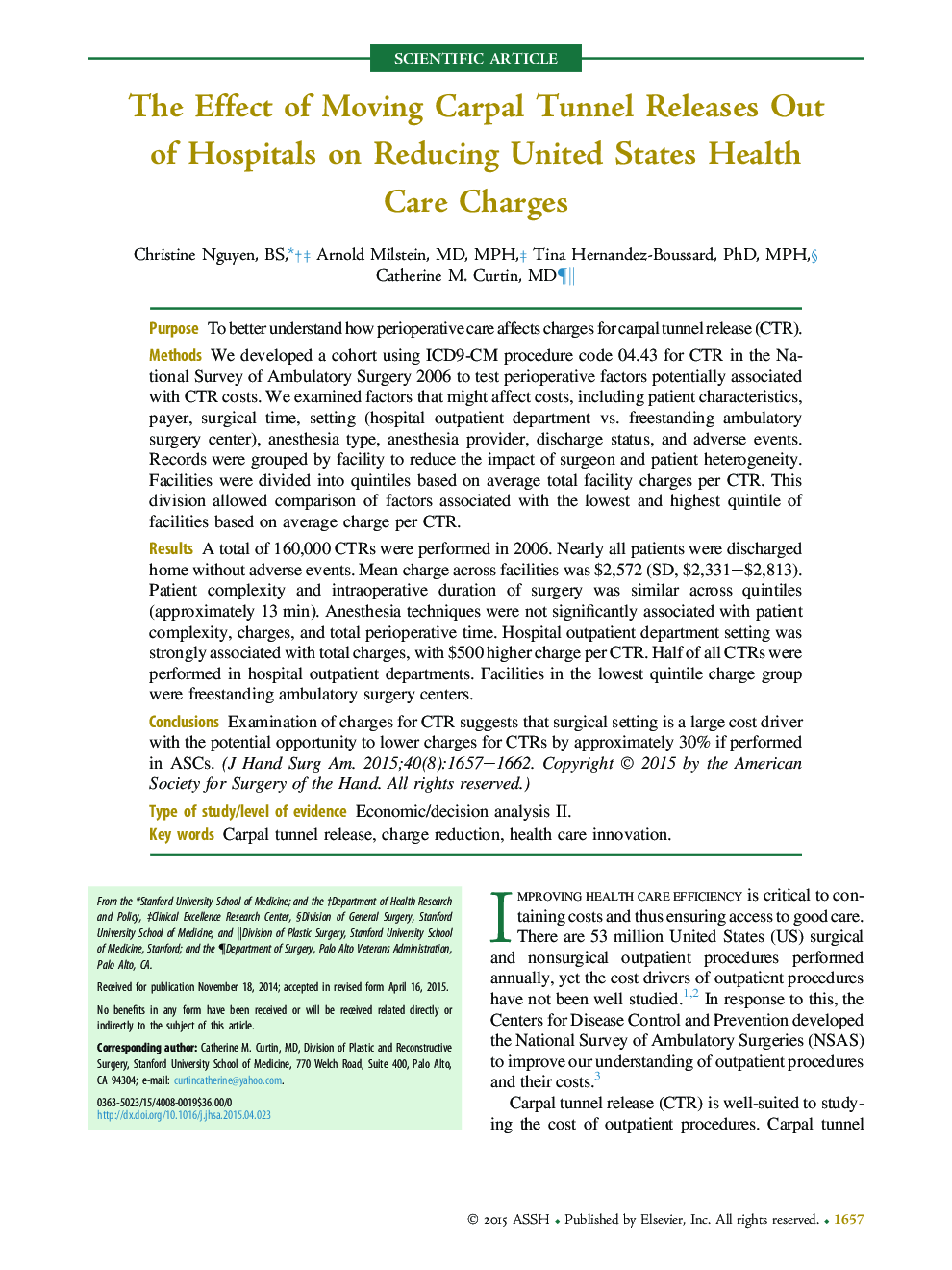| Article ID | Journal | Published Year | Pages | File Type |
|---|---|---|---|---|
| 4066495 | The Journal of Hand Surgery | 2015 | 6 Pages |
PurposeTo better understand how perioperative care affects charges for carpal tunnel release (CTR).MethodsWe developed a cohort using ICD9-CM procedure code 04.43 for CTR in the National Survey of Ambulatory Surgery 2006 to test perioperative factors potentially associated with CTR costs. We examined factors that might affect costs, including patient characteristics, payer, surgical time, setting (hospital outpatient department vs. freestanding ambulatory surgery center), anesthesia type, anesthesia provider, discharge status, and adverse events. Records were grouped by facility to reduce the impact of surgeon and patient heterogeneity. Facilities were divided into quintiles based on average total facility charges per CTR. This division allowed comparison of factors associated with the lowest and highest quintile of facilities based on average charge per CTR.ResultsA total of 160,000 CTRs were performed in 2006. Nearly all patients were discharged home without adverse events. Mean charge across facilities was $2,572 (SD, $2,331–$2,813). Patient complexity and intraoperative duration of surgery was similar across quintiles (approximately 13 min). Anesthesia techniques were not significantly associated with patient complexity, charges, and total perioperative time. Hospital outpatient department setting was strongly associated with total charges, with $500 higher charge per CTR. Half of all CTRs were performed in hospital outpatient departments. Facilities in the lowest quintile charge group were freestanding ambulatory surgery centers.ConclusionsExamination of charges for CTR suggests that surgical setting is a large cost driver with the potential opportunity to lower charges for CTRs by approximately 30% if performed in ASCs.Type of study/level of evidenceEconomic/decision analysis II.
